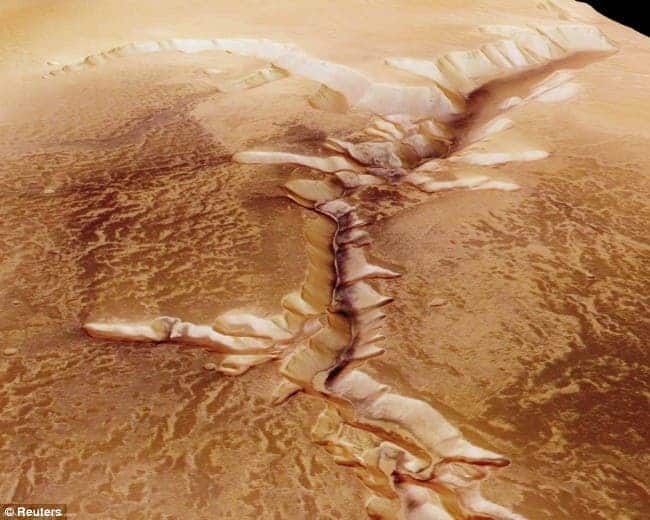Researchers have reported dark streaks near the equator of Mars, hinting at surprisingly large quantities of flowing water. If true, this could be extremely important for life on Mars, and potentially even establishing research bases.
Water on Mars – yes
If you don’t know that rivers and lakes were fairly common on Mars a long time ago, you haven’t been reading a lot of ZME Science. We’ve written tons of articles about water on Mars, with information coming most notably from the Curiosity Rover, Opportunity Rover, and from interpreted pictures. With the development of technology it became fairly simple to observe the river-like valleys which attest almost beyond the shadow of a doubt the flow of water on ancient Mars. However, the planet has changed dramatically in the past billion years (hey, who hasn’t?).
Today, the atmosphere is too thin to support liquid water on the surface for long. However, there are things which suggest that water may still run on the surface from time to time. The first clear signs that this was happening occurred in 2011, when the Mars Reconnaissance Orbiter (MRO) spacecraft observed dark streaks a few metres wide that popped up and widened during the warm season, only to shrink in cooler seasons. The same cycle was observed up to the end of 2013.
“This behaviour is easy to understand if these are seeps of water,” says planetary scientist Alfred McEwen of the University of Arizona in Tucson, who led that study. “Water will darken most soils.”
The streaks were observed in seven different points, located in the relative proximity of the Martian equator. They probably came from the ice trapped about a metre below the surface; the MRO has in fact spotted fresh water occurring following meteoric impacts, which seems to support this theory.
Life on Mars? Probably
Now, McEwen and his colleagues have found 12 more sites; just so you can make an idea, each site has hundreds or thousands of such streaks. The interesting thing is the source. The temperatures there are relatively warm throughout the year, so without a constant source, the subsurface ice would probably already have sublimated. So where does the ice/water come from?
His theory is that water may come from groundwater deep in the crust, which, if true, has major implications for life on Mars – basically, there’s no good reason why life shouldn’t exist in the Martian underground.
“The subsurface is probably the best place to find present-day life if it exists at all because it is protected from the radiation and temperature extremes,” he says. “Maybe some of that water occasionally leaks out onto the surface, where we could see evidence for that subsurface life.”
Hard to explore
However, even if this is the case, it will be extremely hard to explore these areas, as any spacecraft has to be sterilized extremely carefully, to prevent the possibility of contamination.
“You wouldn’t want to send a dirty spacecraft to these places because you’d have the potential to not discover what you’re looking for, but what you took with you,” says John Rummel, chair of COSPAR’s panel on planetary protection.
But it’s not as simple as rubbing the shuttle with alcohol – the sterilization process is very complicated, including heat, hydrogen peroxide vapour or ionizing radiation to kill off as much Earth life as possible. This would significantly raise the costs of any mission in any of those areas.
Scientific Reference:
McEwen, A. S. et al. Nature Geosci. http://dx.doi.org/10.1038/ngeo2014 (2013).




